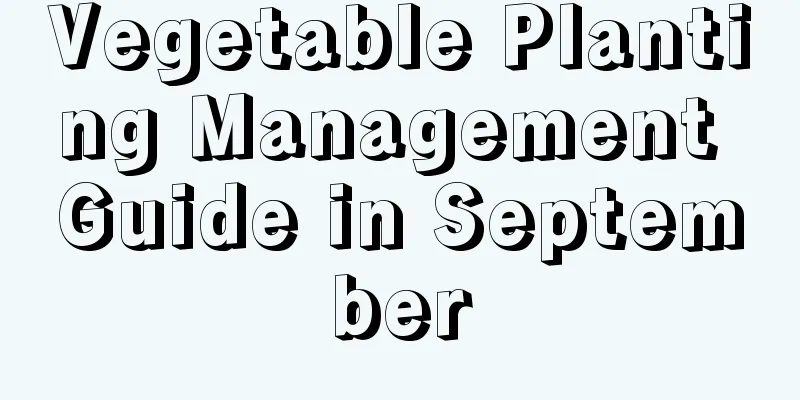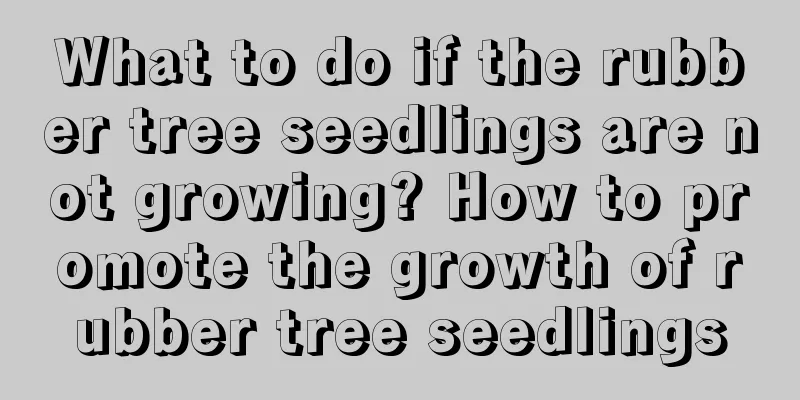Vegetable Planting Management Guide in September

|
September is a critical management period for vegetable growers. At this time, summer crops gradually mature and are ready for harvest, and the sowing and management of autumn vegetables also enter an important stage. So what should we pay attention to in specific planting management work? Let’s take a look at the vegetable planting management guide for September. 1. Seeding and planting Vegetables suitable for sowing in September include spinach, lettuce, chrysanthemum, lettuce , Chinese cabbage , coriander, and chrysanthemum. These leafy vegetables prefer a cool climate and have a short growth cycle, so they are suitable for sowing after the White Dew solar term. 2. Soil management It is necessary to do a good job of cleaning the ditch system, keep the soil moist, and cover and shade the unemerged seedlings to help retain moisture and facilitate emergence. In addition, for bases with equipment, we should make good use of water-fertilizer integration technology and use water-soluble fertilizers reasonably. 3. Field management First, for vegetables that are already in the garden, sufficient base fertilizer should be applied, and more phosphorus and potassium fertilizers should be applied. Attention should be paid to tilling and loosening the soil to enhance soil permeability. The second is to combine watering with the application of light fertilizer, improve the quality of thinning, pay attention to seedling selection, and water reasonably to prevent excessive humidity from causing root rot and seedling death. The third is to carry out "flooding the garden" after the rain to lower the soil temperature and alleviate rainy season diseases. 4. Harvest and Cleaning September is the ripening period for many summer vegetables, such as tomatoes, cucumbers, peppers, etc. They should be harvested in time to avoid over-maturity or the spread of diseases. After harvest, clean up the stumps and diseased leaves in the field to reduce the overwintering base of pests and diseases. 5. Keep warm and protect against cold After September, the temperature difference between day and night increases. For vegetables with weak cold resistance, if the temperature drops at night, you can use mulch to protect them from frost damage. 6. Pest and disease control The focus is on preventing and controlling root rot, viral diseases, downy mildew, and various pests such as the American leafminer, aphids, whiteflies, etc. Specific prevention and control can be carried out according to the occurrence patterns and harm characteristics of each disease and pest. Give priority to biological and physical control methods and reduce the use of chemical pesticides. To sum up, the vegetable planting and management work in September needs to comprehensively consider multiple aspects such as sowing and planting, field management, pest and disease control, harvesting, and insulation to ensure the healthy growth and harvest of vegetables. However, in actual operation, adjustments must be made based on local conditions.
|
<<: Fruit tree planting management guide in September
>>: When is the best time to plant carrots?
Recommend
Is carambola a fruit or a vegetable?
Is carambola a fruit or a vegetable? Star fruit i...
How to propagate cosmos
Seed propagation of cosmos Sowing is a common met...
Coriander is 40 yuan per pound! If you can’t afford to eat it, hurry up and grow one at home!
Plant a handful of coriander roots in a pot, and ...
The cutting method of Euphorbia pulcherrima The cutting planting method and time of Euphorbia pulcherrima
The rooting survival rate of Euphorbia cerasifera...
Why is the ball orchid growing slowly?
The reason why the ball orchid grows slowly One o...
How many days does it take for coriander to germinate?
Coriander, also known as cilantro, is a condiment...
What to do if the spring miracle grows too long
one. Causes: 1. Insufficient light. This plant re...
How to grow water hibiscus
Breeding points First, choose a good basin or wat...
How to breed Hongyun Dangtou
1. Division propagation After this type of plant ...
Orchid Planting Techniques
Orchid is a beautiful and elegant flower , loved ...
Where is the best place to put lilies in your home?
1. Place it on the balcony It likes to grow in a ...
What is lotus white?
What is lotus white? Lianhuabai is actually anoth...
Is black pine suitable for planting in the courtyard? How to grow it in the courtyard?
1. Suitable for planting in the garden Black pine...
How often should cypress trees be watered?
How often should cypress trees be watered? Spring...
When should I water the crabapple after it is potted? What should I do if I water it too much?
1. Watering after potting After the crabapple is ...









